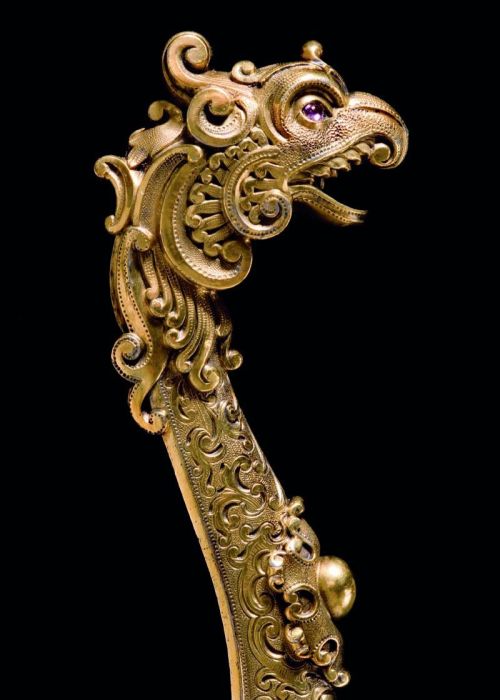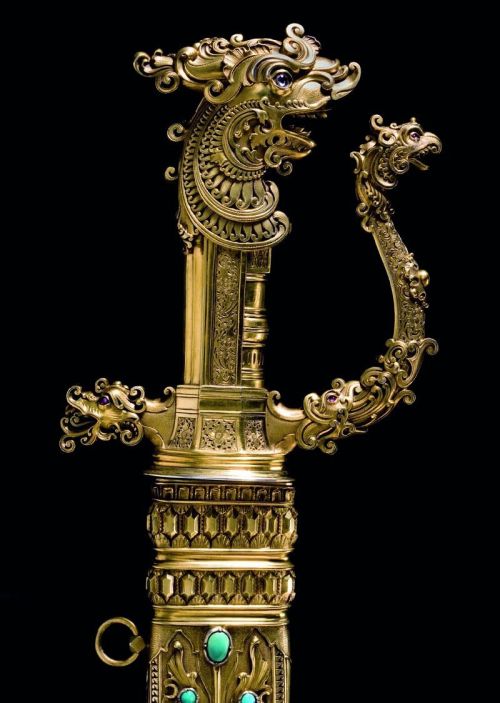art-of-swords:Ceremonial or Presentation Kastane SwordDated: 1850Culture: RussianProvenance: Comte d
art-of-swords:Ceremonial or Presentation Kastane SwordDated: 1850Culture: RussianProvenance: Comte de Nesselrode, Château de Tzarevtchina (Governement de Saratov, Russia)Goldsmith: Ignatii Pavlovitch SazikovMounted in heavily cast and chased silver-gilt, the hilt in traditional Sinhalese (Indo-Aryan ethnic group native to the island of Sri Lanka) style, the sword is elaborately decorated with guilloche, fluting and panels of engraved foliage and florets, with the pommel and quillon formed as the stylised heads of lions and the ogee-shaped knucklebow emerging at the quillon from the mouth of a beast and terminating at the pommel in the stylised head of a dragon.The eyes of all the beasts on the hilt are cabochon-cut garnets or rubies. Below the quillon block, the hilt widens to form a stepped collar into which are struck the maker’s mark of the St. Petersburg court goldsmith Ignatii Pavlovitch Sazikov, the standard mark for 84 zolotniki and the assay master’s mark for Dmitri Tverskoy with the date 1850.The wide blade of reduced Ottoman kiliç form in Damascus steel of Kirk Narduban pattern, with residual openwork panels of gilding either side of its back edge and a raised forte terminating in chiselled mihrab-style points. The scabbard of heavily cast and chased silver-gilt, decorated overall with foliage and guilloche.The near- and off-sides set with blue and green cabochon-cut turquoises, the chappe formed as a stylised dragon’s head, the back edge decorated with a pattern of overlapping scales and fitted with two loose rings in multifaceted mounts and the upper part formed of two bands of elongated hexagons. Source: Copyright © 2016 Peter Finer -- source link
Tumblr Blog : art-of-swords-deactivated201705.tumblr.com




